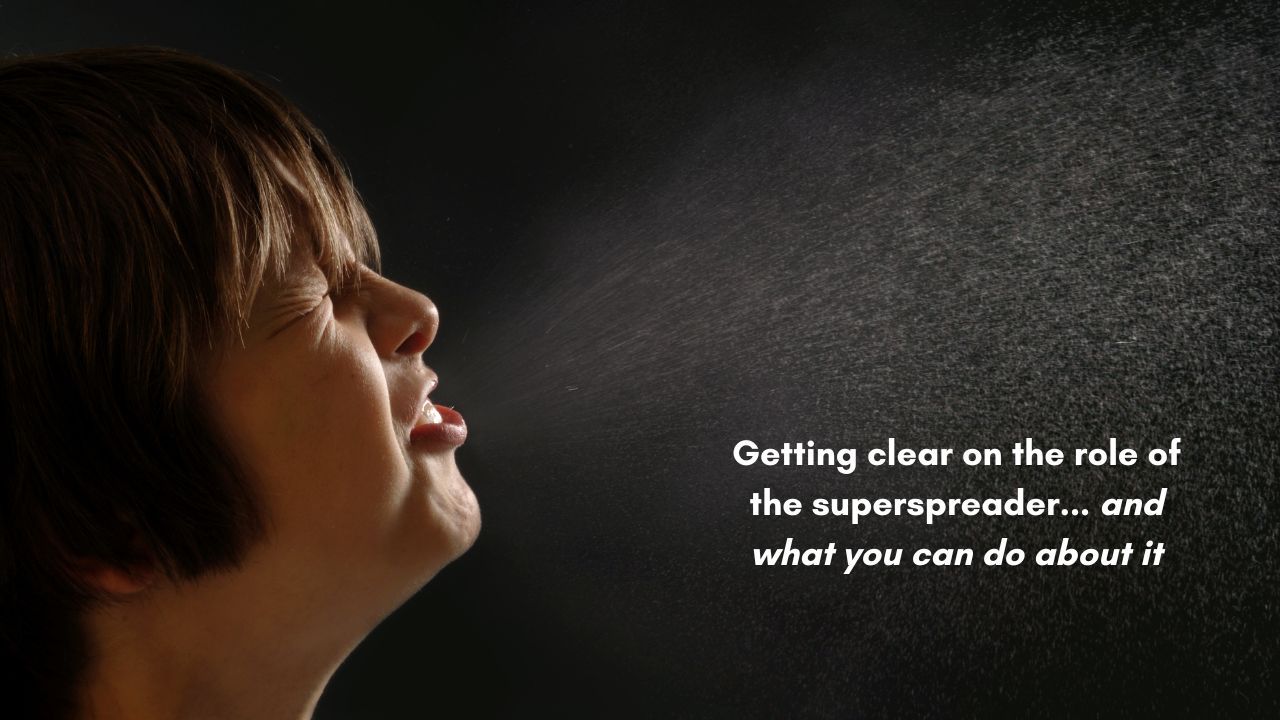Getting clear on the role of the superspreader...
Mar 15, 2025
Here's Part 2 to my report on Malcom Gladwell's book "Revenge of the Tipping Point."
This is what most of us think of as a "superspreader" -- someone who is sneezing loudly in a public place. Recently I heard one parent talk about their kindergarten aged kids as "germ factories." 🤢

But, and only once in the time I've been living in my current location, I have also seen the trees in unison releasing their pollen. The air was yellow with it. So some "superspreaders" are helpful and some are absolutely not.
What you should know about superspreaders...
This part of Revenge of the Tipping Point was illuminating -- if kind of freaky to learn about. You might recognise the word "superspreader," which has come into usage around infectious diseases.
Gladwell tells about the beginning of COVID. A Chinese student came back to the US from Wuhan, China on January 31, 2020, infected with COVID. But that's not news. Not a single other other case came from this person.
However a single event in the US at the end of February -- a meeting of 175 people -- was, in the end, linked to 300,000 cases. In tracking that event, researchers noted that these cases could be traced to a single individual.
What makes one person infect no one, and another start a tsunami of illness?
The second person was a superspreader.
You'll need to read the book to find out what makes a person a good superspreader when it comes to disease. What I'm more interested in is what makes someone a superspreader when it comes to story, culture, and group perspectives.
The first thing that supports someone to spread their story widely is attention.
You listen to people you trust. And if you trust in them, most likely you will believe them. This is a way to get some good personal advice. But it is also the way urban legends spread.
There are other people who have either the platform or the notoriety to garner an overabundance of attention. This is true for some people who are celebrities simply because people are paying attention to them, or those who speak or act in a way that grabs attention or whose message is spread by others.
We have many public voices today who messages are shocking enough that they get widespread attention, which fuels more attention. And so the story grows.
Many of these people are NOT good storytellers, but they know that repetition works. The more we hear something, the more we believe it, even if it is proven to be false later on.
It is just like we learned in basic strategy way back when -- the 80/20 rule works here, too.
The challenge is that these stories are hard to dislodge. Facts won't do it. Only a story can replace a story.
The second thing that supports superspreaders is sharing their stories with like-minded others.
Usually those who are like us, like us. They are more open to the stories we're sharing and more likely to pass them on. Sometimes, in a business context, I've heard this described as "preaching to the choir."
What Gladwell raises in his book is that medical -- and social -- epidemics move faster and are more dangerous to homogeneous groups.
History has shown us repeatedly that good people can be persuaded to do morally questionable things because of the power of the group story.
Diversity is a key to vibrant health in nature. This ought to be a warning to us too -- especially in this time of divisiveness. The more you gather a beautiful diversity of people around you, the more robust you will be in the face of the superspreaders with ideas aimed at benefitting only themselves.
The more you listen to a diversity of perspectives, experiences, people and stories, the more open your mind will be to the possibilities that are still out there, waiting to be discovered.
Is it peril or possibility?
That all depends on you. In times like these it is easy to get stuck in the negative spiral and focus on those kind of stories.
Of course this is a matter for the reticular activating system, that part of your brain that looks for patterns. Whatever you focus on, that you will see more of.
If you've ever had a friend who was pregnant and then suddenly got surprised how many pregnant people are out there, or you were thinking about a particular brand of shoe and noticed how many others were wearing it, you know what I mean.
Part of being a Story Activist is to look for and uplift the stories that will help us be better humans together.
I hope you think about this role I'm offering you. If more of us decided to practice more kindness or more understanding or more peace for just one day a week, there will be more kindness, understanding and peace in the world.
The more of us who look for an uplift stories about the positive future we can create together, the more of this future we will see.
You can make a difference. Right now.
See Part 3 here.
Isn't it time to have a brilliant ally on your side?
Subscribe to my newsletter for the latest about the power & practice of story.
We hate SPAM. We will never sell your information, for any reason.
